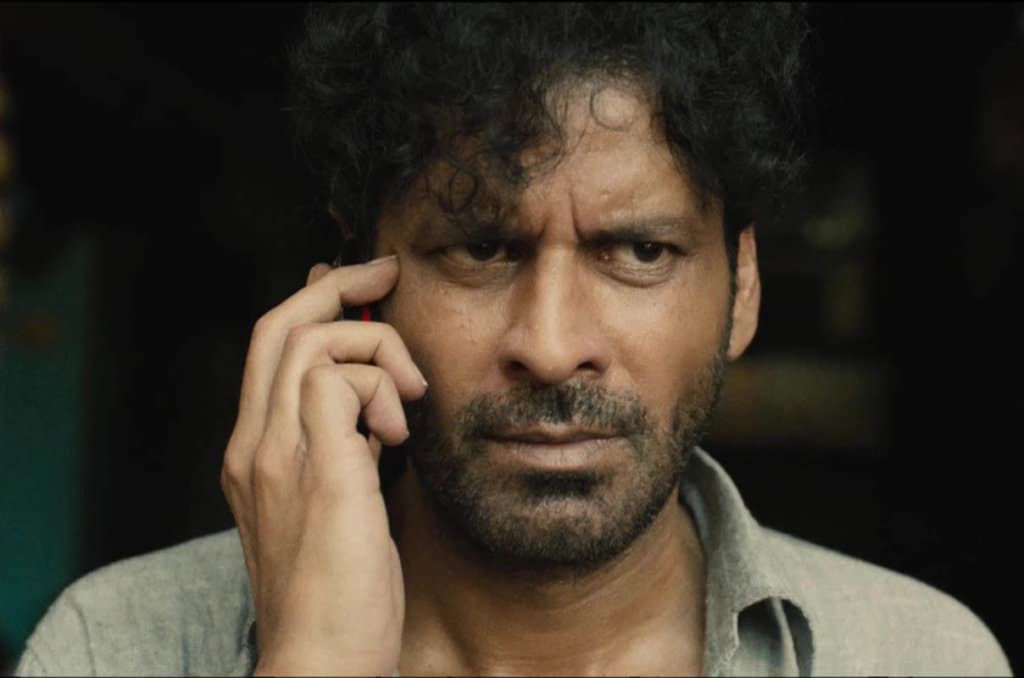Dipesh Jain begins his film Gali Guleiyan with a quote from William S. Borroughs, “There are no innocent bystanders….. what are they doing there in the first place?” His story is about a paranoid, who, as Borroughs says, “is someone who knows a little of what is going on.”
The protagonist Khuddoos is Jefferies from Hitchcock’s Rear Window (1954), except here he has developed an intricate apparatus of his own cameras to snoop on the alleys and byways of an Old Delhi neighborhood. His own handicap, so to speak, is a weakened mind that shuns social interaction. He is trapped in his own prison, unable to look at himself from outside of himself.
Khuddoos has a series of social interactions that suggest that he has lost track of time. His reclusiveness gets on the nerves of his brother who pays a couple of visits to rekindle family ties. His only friend, Ganeshi, seems too nice a gentleman to care for him, guarding him against the well-deserved wrath of neighbors. Ganeshi becomes aware that his odd-natured friend is worried about a young boy beaten behind the walls by his strict father. Despite his failure to keep Khuddoos on track of a normal life and away from the obsessive fear of the neighbor, Ganeshi remains the only source of human warmth for his friend. He brings food for Khuddoos and takes him to see a doctor.
Idris, the young boy who lives in the same neighborhood, behind some of the walls, has a strict if drunken father, a loving mother and a younger brother. Like many around him, he wishes to run away from the walled city. He tells his friend Ginny once of a tale of another young boy who was killed by his mother before she killed herself. Appears that many are caged in the walls that hide the repression as fresh wind is inhibited. The final shots of the film are quite stunning to give meaning to that element of the narrative just as we begin to grasp the suffocation of Old Delhi, as film credits begin to roll.
Idris’s life shares the space with Khuddoos, who installs cameras to capture the sounds of abuse. The connection between the two remains tenuous, as we know just a little about their lives and more about the environment in which they live. Khuddoos’s spiral downward is unstoppable, while Idris’s mother keeps him close, keeping the flame of hope alive.
Jain’s film lays bare the threads of relationships and character-sculptures across the congested part of the city. We are not asked to weave the threads together and the film is better for it. Chris Witt’s editing constructs the silos of situations close to each other to render them legible, but without pushing them onto each other. Kai Miedendorp’s cinematography reinforces the director’s vision, from the textures of sweaty skins to the dimly lit alleys and rooms. It is a directorial effort of promise, controlled and measured.
Om Singh’s Idris reveals much on the profound silence of his face alone. He controls anger as he holds back with caution. When smile cracks through his face once as he visits an electrician’s shop to watch films on VHS tapes, he lets you cherish it just enough to see the kid inside. Shahana Goswami’s mother Saira is the surprise performance of the film. Warm, protective, and cautious, she offers an oasis of love to Idu/Idris. She is the only warm human living among cold, fearful souls. And finally, Manoj Bajpayee, fame behind him, inhabits the character of Khuddoos with overplayed earnestness. If scowling face has variations, he does not give us the privilege of seeing them. A character in a script is meant to grow from one point to another and Bajpayee has mastered the art of showing all at once with all the intensity. The remarkable cast of the film, Ranvir Shorey included, offers a balance the singular tone of Bajpayee.
Gali Guleiyan, which has been screened at 12 international festivals, including presently at the Indian Film Festival of Los Angeles, is scheduled for theatrical release in May.
